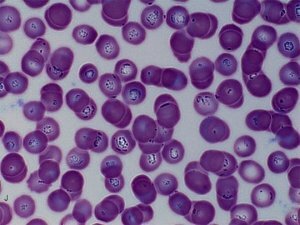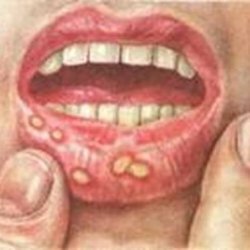Babesiosis

Description
Babesiosis is an acute infectious disease that occurs in humans and animals. The disease is characterized by intoxication of the body, anemia and fever. The first time he was diagnosed in 1957 in Yugoslavia.
To date, the disease has spread to all continents of the world, except Antarctica. The most common disease can be found in Europe and on the east coast of America.
Babesiosis is caused by the simplest kind of babesia, they are transmitted from animal to man, and from person to person through pasture mites.
To date, only 100 cases of babesiosis are known. Almost all cases ended in a fatal outcome. Cure the patient did not work. In people with good immunity, the disease is asymptomatic. Every year in Europe, more than 10 thousand pets suffer from babesiosis. The transports are argas and pasture mites. The causative agent remains in the body of the tick for life and is transmitted transovarially.
Causes of
After the tick bite, the causative agent of babesiosis is transmitted through its saliva. It penetrates into the blood capillaries and multiplies in red blood cells. When more than 5% of erythrocytes are affected, the disease begins to manifest. After the destruction of erythrocytes in humans, anemia begins, it is accompanied by microcirculation and tissue hypoxia.
People at risk are:
- With a remote spleen.
- Low immunity.
- Patients with AIDS.
- In the presence of an autoimmune disease.
- Older people.
- Patients who have had a serious illness recently.
In this case, the disease is in very severe form, ending most often with a lethal outcome. In recent years, cases of the disease have increased. Infection is most prevalent in North America.
Symptoms of
The incubation period of the disease is 1-3 weeks. It can last up to a month, often passes asymptomatically. If the body is weakened, then the disease will be difficult.
With mild disease:
- A slight chill.
- Anemia.
- Weakness of the body.
- Fever.
With severe form:
- Body temperature up to 41 degrees.
- Hemoglobin in the urine.
- Renal failure.
- Anuria.
- Free hemoglobin in the blood.
- Jaundice.
The acute form of the disease can change into a chronic one. This is manifested by drowsiness, insomnia, muscle pain, dry cough, depression, decreased appetite. The course of the disease can be severe and acute.
Diagnosis
The diagnosis of babesiosis is difficult. Any patient who has a high fever for a long time, increases the liver. With antibiotic therapy, there will be no results. Therefore, the patient will be examined for all infectious diseases.
It is important to know the patient's epidemiological data - stay in the endemic area, cases of bites of insects and ticks. It is necessary to establish in what state the immunity of the patient.
The diagnosis is confirmed on the basis of a smear and a drop of blood. An effective method of diagnosis is xenodiagnosis. The patient's blood is injected into the laboratory hamsters. And after 2 weeks, a blood test is performed. The most expensive but effective method of research is the determination of DNA parasite by polymerase chain reaction.
Treatment of
Babesiosis is a poorly understood disease. To the treatment the doctor approaches individually to each patient.
The mild form of the disease passes asymptomatically, and does not require drug therapy. The disease disappears on its own.
Success in the treatment of severe and moderately severe forms of the disease - the appointment of antiparasitic drugs, and only if prescribe medications in the early stages of babesiosis. Treatment in a hospital under the supervision of a doctor.
Treatment regimens:
- Assignment of Atatovone, Azithromycin. Accept them at the same time. To lower the temperature, the patient is recommended symptomatic treatment.
- Positive result will be on the third day after taking Pentamidine Diisocyanate and Co-trimoxazole.
- An effective method of treatment is the appointment of Clindamycin and Quinine.
- In acute form of kidney failure do hemodialysis.
Folk remedies
Traditional medicine has not yet found a suitable method of treatment for babesiosis patients. Without etiotropic treatment, the forecast is unfavorable.
To eliminate anemia, it is recommended to take iron-containing preparations.
Complications of
Babesiosis affects the body negatively. It leads the disease to acute renal and renal-hepatic insufficiency. There may be pneumonia, which will worsen the patient's condition.
Prevention
Modern medicine has not yet developed a specific prevention in the fight against babesiosis. The best prevention is the destruction of rodents, mites on pastures. And also treatment with acaricides. It is necessary to use anti-maltreatment drugs.
If you suspect a disease, you should contact an infectious disease specialist.



